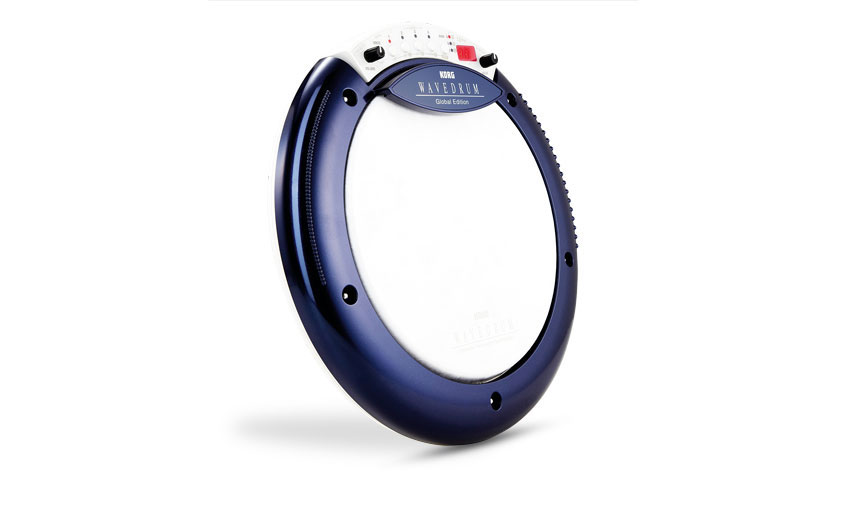MusicRadar Verdict
The Wavedrum is a formidable cutting-edge tool that could be used in countless music and media applications.
Pros
- +
Great presets. Stunning sounds. Endlessly flexible.
Cons
- -
Pricey.
MusicRadar's got your back
The new Wavedrum is the latest in the second-generation series of percussion synths from Korg. Like all of its predecessors it can be played like an acoustic drum, hitting the head/rim with sticks, mallets, hands/fingers, brushes or scraped like a guiro on its outer edge. The Wavedrum may also be struck using similar playing techniques to those of conga players or any hand percussionist.
Build
"Updates include a range of new PCM sounds/instruments, additional DSP algorithms and greater levels of instrument sensitivity"
Apart from its metallic blue aluminium rim, the Global Edition looks identical to the original WD-X and Oriental versions. Under the bonnet, however, Korg has made several enhancements to improve the overall sound and playability. These include a range of new PCM sounds/instruments, additional DSP algorithms and greater levels of instrument sensitivity.
The sounds are created by combining PCM samples with a variety of electronic syntheses, termed as 'algorithms'. This highly sophisticated process produces sounds ranging from incredible realism to totally surreal. Six push buttons and two rotating pots is all that is necessary to control the Wavedrum. A series of LEDs and a three-digit alphanumeric display give the user a variety of information for patch/ program number, mode etc.
Hands On
"Performing with a Wavedrum couldn't be simpler - choose the patch in 'Live' mode and play"
Performing with a Wavedrum couldn't be simpler - choose the patch in 'Live' mode and play. While the sounds produced are impressive, it's the overall sensitivity that caught me by surprise. When selecting a snare sound for example, flicking the rim has the effect of rattling the Wavedrum's snares.
Playing along to any of the loops is great fun, but the auxiliary input allows the user to play tracks from their own CD/MP3 player, and this input can also be used for another Wavedrum.
Discovering the Aladdin's cave of presets is amazing, and a great example of the Wavedrum's sonic potential is the 'cool wind' patch - this is struck by the hands and pressure applied to the centre sensor, creating a haunting, blowing sound.
Applying further pressure reduces the pitch while triggering an icy wind blast. The more pressure applied, the more intense the sound of the wind - cool! This pressure sensor also dampens sounds, raises or lowers pitch and sustain, and triggers additional sounds.
The range of preset sounds is excellent and, while the editing is complex - apart from switching off the reverb on a patch or two, we did very little editing during the course of the review - the option is there.
Thanks to the subtleties of the response, the feel of the Remo Fibreskyn and some great drum sounds, it was sometimes easy to forget that we were playing an electronic instrument.
Given that this is an undeniably complex instrument, it is surprisingly easy to play. The preset sounds are stunning and, if you can turn your hand to editing, the sonic possibilities are almost limitless.

"I believe I’ve got the last recording Jeff Beck ever did in the studios": Guitarist Mick Rogers thinks he's in possession of a piece of musical history

“If you want a good vocal, you gotta drink snake sperm”: Singer Jessica Simpson reveals the unusual drink that keeps her vocal cords in tip-top condition

“I was thinking at the time, if anyone wants to try and copy this video, good luck to them!”: How ’60s soul music, African rhythms and a groundbreaking video fuelled Peter Gabriel’s biggest hit










